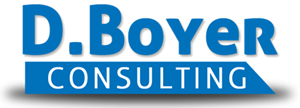Business is mostly conducted via email or phone communications.
Office hours 10:00 a.m. to 6:00 p.m, Mon. - Thurs., and 10:00 a.m. to 2:00 p.m. on Fridays.
SEND EMAIL INQUIRIES DIRECTLY TO:
Dawn.Boyer@me.com
Business is mostly conducted via email or phone communications.
Office hours 10:00 a.m. to 6:00 p.m, Mon. - Thurs., and 10:00 a.m. to 2:00 p.m. on Fridays.
SEND EMAIL INQUIRIES DIRECTLY TO:
Dawn.Boyer@me.com
Business is mostly conducted via email or phone communications.
Office hours 10:00 a.m. to 6:00 p.m, Mon. - Thurs., and 10:00 a.m. to 2:00 p.m. on Fridays.
SEND EMAIL INQUIRIES DIRECTLY TO:
Dawn.Boyer@me.com
Turn a resume job description into a capability statement.
May 30th, 2012 by Dawn Boyer
Many job seekers are not aware their resumes are ‘boring’ and tell the recruiter nothing other than providing a copy and paste version of a job seeker’s most recent job description. The job description may be word-for-word from the most recent company’s compensation plan. Resume owners don’t realize this is a turn-off to recruiters. It’s boring and tells recruiters nothing about the job seeker’s capability and what problems they solve for the hiring company. The best way to improve a resume’s attraction and the job seekers qualifications by as much as 50% is to metricize the achievement bullets. Here’s a simplified example, which you can following along (this initial list is from a resume writing class). Task – name what a dinner waitress does:
- Serves food to customers
- Takes orders, submits check to customers, cashes ticket out at register
- Busses tables, folds/wraps silver-ware.
- Cleans serving area(s) and waitress station at the end of the shift.
This is a standard job description for waitresses across the nation. Nothing stands out which makes a hiring manager want to hire this applicant over another. But, when the resume is metricized, the words ‘show’ versus ‘tell’ what the wait staff can do for that restaurant manager. Numbers impress people, numbers document verifiable information, and numbers proves capability of what can be achieved. New version of resume that has been metricized notes:
- Serves meals to approximately 45 customers, at 10 tables, per five-hour shift, four nights a week; occasionally flipping tables 2-3 times nightly
- Takes orders, circa $150 per ticket/table; with average sales per shift approximately $1,500 on week-nights/$2,000 weekend shifts
- Busses 10-20 tables during shifts, wraps 200+ silverware sets, and sanitize wipe down 40-50 chairs and tables at end of dinner hour schedule per shift
- Maintains cash register sales, with zero errors over six months, including cash, ATM, and charge sales
- Assists kitchen / bus staff – vacuuming 1,500 square foot restaurant area; clean out margarita machines; prep for circa 100 desserts/salads nightly
Which waitress is the hiring manager most likely to hire – the one submitting the job description or the second applicant submitting the capability statement? A capability statement can be used in lieu of any job description by simply thinking through the achievements of the tasks accomplished and adding numbers to show what has been achieved by the applicant. The hiring manager can decipher the capabilities to their needs.
A capability statement makes a powerful statement to a future employer. The future employer can verify data from past employers to confirm capabilities. Verifiable data is easier for employers to confirm (…or deny – be careful to use terms such as ‘approximately,’ ‘circa,’ or ‘estimated’ to avoid misrepresentation). This builds a stronger case for hire for the applicant and makes interviews easier because the information is richer from which to develop questions.
Dawn Boyer can be reached at Dawn.Boyer@me.com and is the owner of D. Boyer Consulting – “Optimize Human Assets, SEO Resumes, and Link-You to LinkedIn,” (https://dboyerconsulting.com); providing human resources and business development consulting for small businesses, resume writing, re-writing, and coaching, and training users (groups/individuals) on LinkedIn social media.
Copyright 2012
Readers Comments
Turn a resume job description into a capability statement.
May 30th, 2012 by Dawn Boyer
Many job seekers are not aware their resumes are ‘boring’ and tell the recruiter nothing other than providing a copy and paste version of a job seeker’s most recent job description. The job description may be word-for-word from the most recent company’s compensation plan. Resume owners don’t realize this is a turn-off to recruiters. It’s boring and tells recruiters nothing about the job seeker’s capability and what problems they solve for the hiring company. The best way to improve a resume’s attraction and the job seekers qualifications by as much as 50% is to metricize the achievement bullets. Here’s a simplified example, which you can following along (this initial list is from a resume writing class). Task – name what a dinner waitress does:
- Serves food to customers
- Takes orders, submits check to customers, cashes ticket out at register
- Busses tables, folds/wraps silver-ware.
- Cleans serving area(s) and waitress station at the end of the shift.
This is a standard job description for waitresses across the nation. Nothing stands out which makes a hiring manager want to hire this applicant over another. But, when the resume is metricized, the words ‘show’ versus ‘tell’ what the wait staff can do for that restaurant manager. Numbers impress people, numbers document verifiable information, and numbers proves capability of what can be achieved. New version of resume that has been metricized notes:
- Serves meals to approximately 45 customers, at 10 tables, per five-hour shift, four nights a week; occasionally flipping tables 2-3 times nightly
- Takes orders, circa $150 per ticket/table; with average sales per shift approximately $1,500 on week-nights/$2,000 weekend shifts
- Busses 10-20 tables during shifts, wraps 200+ silverware sets, and sanitize wipe down 40-50 chairs and tables at end of dinner hour schedule per shift
- Maintains cash register sales, with zero errors over six months, including cash, ATM, and charge sales
- Assists kitchen / bus staff – vacuuming 1,500 square foot restaurant area; clean out margarita machines; prep for circa 100 desserts/salads nightly
Which waitress is the hiring manager most likely to hire – the one submitting the job description or the second applicant submitting the capability statement? A capability statement can be used in lieu of any job description by simply thinking through the achievements of the tasks accomplished and adding numbers to show what has been achieved by the applicant. The hiring manager can decipher the capabilities to their needs.
A capability statement makes a powerful statement to a future employer. The future employer can verify data from past employers to confirm capabilities. Verifiable data is easier for employers to confirm (…or deny – be careful to use terms such as ‘approximately,’ ‘circa,’ or ‘estimated’ to avoid misrepresentation). This builds a stronger case for hire for the applicant and makes interviews easier because the information is richer from which to develop questions.
Dawn Boyer can be reached at Dawn.Boyer@me.com and is the owner of D. Boyer Consulting – “Optimize Human Assets, SEO Resumes, and Link-You to LinkedIn,” (https://dboyerconsulting.com); providing human resources and business development consulting for small businesses, resume writing, re-writing, and coaching, and training users (groups/individuals) on LinkedIn social media.
Copyright 2012









